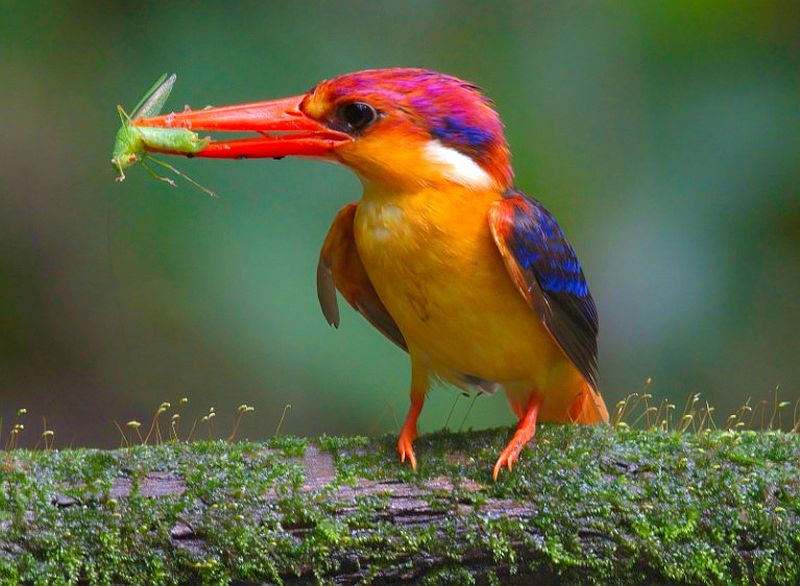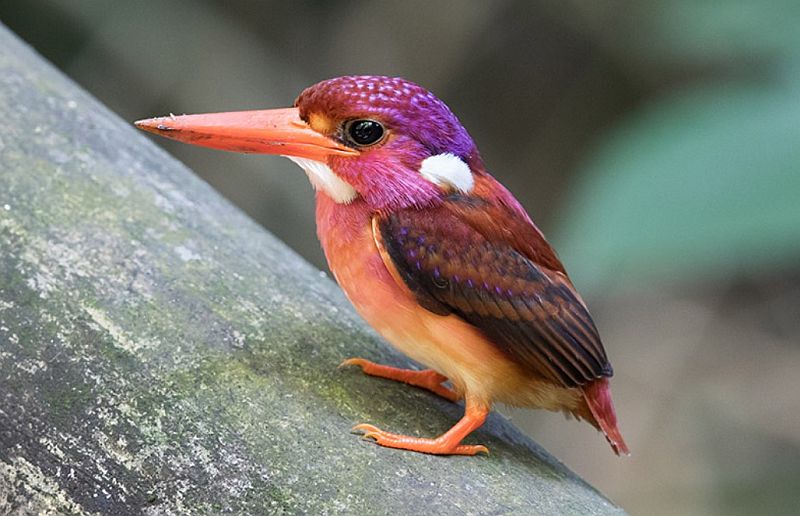Description: The Oriental dwarf kingfisher is distinguished by its remarkable plumage of metallic lilac, orange, and vivid blue patches. It is the smallest species of forest kingfisher found in the Philippines. The South Philippine Dwarf Kingfisher is a bird that may be observed in the virgin and second-growth forests of the islands of Mindanao and Basilan.
Vocalizations: Its call is “high-pitched, insect-like, and almost inaudible zeeep.”
Habitat: Tropical moist lowland forests are the native habitat of the dwarf kingfisher (Ceyx melanurus). This tiny-sized bird is an indigenous species in the Alcedinidae family. The primary concern is extensive lowland deforestation on all the islands within its range; most of the unprotected lowland forest is leased to mining and logging concessions.
Behavior: Oriental dwarf kingfishers are solitary feeders who perch in low vegetation or on rocks before taking flight to hunt in the underbrush or on the ground. Larger prey are usually carried back to a perch, where the bird will repeatedly attack it with its beak before swallowing. They can also retrieve spiders from their webs and grab insects in flight. They are also capable of diving into water for prey at or just below the surface without immersing themselves.

Other Names: This pocket-sized kingfisher is commonly referred to as the black-backed kingfisher or three-toed kingfisher.
Distribution: This tropical kingfisher is native to the majority of Southeast Asia and the Indian Subcontinent. It is also found on the islands of Luzon, the Polillo Islands, Catanduanes, Basilan, Samar, Leyte, and Mindanao.
Migration: It is partly migrant. In August or September, they frequently travel southward into the Malaysian Peninsula, then migrate north again in March. Between August and December, a significant number of night-flying migrants have been observed at Maxwell’s Hill and Fraser’s Hill in Malaysia, together with light stations situated on numerous islands up to 60 km off the western coast. Though its travels are yet unknown, the oriental dwarf kingfisher is a mating visitor over much of its range in India.
Feed: It consumes fish, frogs, lizards, crabs, worms, and insects, including mantises, grasshoppers, flies, water beetles, winged ants, mayflies, spiders, and worms.
Size: A dwarf kingfisher measuring 12.5–14 cm (including beak and tail), it is just marginally larger than a medium-sized hummingbird. Females usually weigh 14–16g, while males weigh 14–21.5g, with the males being slightly larger.
Threats: The primary threat to the oriental dwarf kingfisher is the destruction of its forest habitat; population levels will probably decline as a result of the ongoing loss of important breeding habitats brought about by human activity. Other threats that are common to kingfishers and other migrating bird species include the drying of ponds and streams, the degradation of streambanks, malnutrition, and thirst. Climate-related variations in the dates of migration and reproduction.
Read More: Pied kingfisher (Ceryle rudis)







